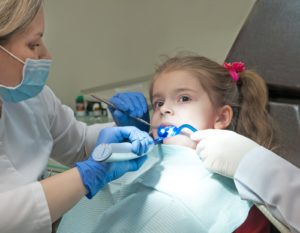TO SEAL OR NOT TO SEAL
December 13, 2021
 If you have kids, and you take them to the dentist, I am sure you have heard about sealants. Many, if not most dentists recommend dental sealants.
If you have kids, and you take them to the dentist, I am sure you have heard about sealants. Many, if not most dentists recommend dental sealants.
A dental sealant is a flowable resin, generally placed on permanent 6 and 12-year molars. It is placed in the grooves on the top of the teeth. Its purpose is to help prevent decay from forming in this area, which is the most common place for dental decay to occur. It does nothing in the prevention of decay between teeth, or on any of the other 20 teeth in the mouth – although the molars are generally the first teeth to decay.
Make sense so far? Now for the controversy. In my opinion, sealants have a very limited application. Let me take a step back and give you some information to help you see where I am coming from.
There are actually many different techniques to place sealants. The way we are taught in school, and the way most dentists determine if sealants are recommended, is how deep the grooves in the tooth are. Sealants are placed if that little sharp tool (dental explorer) doesn’t stick in the tooth. The surface of the tooth is cleaned (to the best of the operator’s ability) and the sealant is flowed into the grooves of the tooth and cured with an ultraviolet light.
Problem is, that dental explorer is not very accurate – about 57% according to studies I have seen. Detection shoots to over 90% accuracy with the aid of a laser. This type of laser sends a beam of light into the top of the tooth and measures density of tooth structure.
Are there teeth that get sealed that have decay? Yes. However, according to studies, sealing over minimal decay is clinically acceptable. These studies say that the sealant can actually stop or prevent the decay from progressing. Would you want that in your mouth? I wouldn’t.
But that’s not even the main problem. Once that sealant is placed, the laser detection tool is ineffective. You then have to rely on x-ray detection, which is also not very accurate, unless the decay is moderately large. I cannot tell you how many teeth I have done deep fillings on that had clinically acceptable sealants in place.
So, how does the decay get under the sealant? It was either there to begin with and grew, or the “seal” leaked. ALL dental restorations (some less than others) have a microscopic gap between the restoration and the tooth that is constantly exposed to the oral environment. Over time, that gap becomes bigger, allowing bacteria in, which may potentially cause decay. So, my position is, why would you place a “restoration” on a seemingly healthy tooth?
A healthy diet, good home care, and regular professional care are the keys to dental decay prevention. So, do sealants prevent decay? They aid in not getting stuff stuck in the grooves of teeth which can cause decay, but they do not guarantee you won’t get decay.
The technique used to place the sealant is crucial to its success. Having said that, I would rather have a healthy tooth remain restoration-free, and be able to be monitor it with a laser. If decay is detected early with the laser, the tooth can have a very conservative tooth-colored restoration. This can then be monitored clinically and by x-ray.
So, will I place sealants? Rarely. If I do, it’s only after a discussion with the child’s parents about the things discussed above.
Dr. St. Clair maintains a private dental practice in Rowley and Newburyport dedicated to health-centered family dentistry. He has a special interest in treating snoring, sleep apnea and TMJ problems. If there are certain topics you would like to see written about or questions you have, please email them to him at jpstclair@stclairdmd.com
No Comments
No comments yet.
RSS feed for comments on this post.
Sorry, the comment form is closed at this time.







